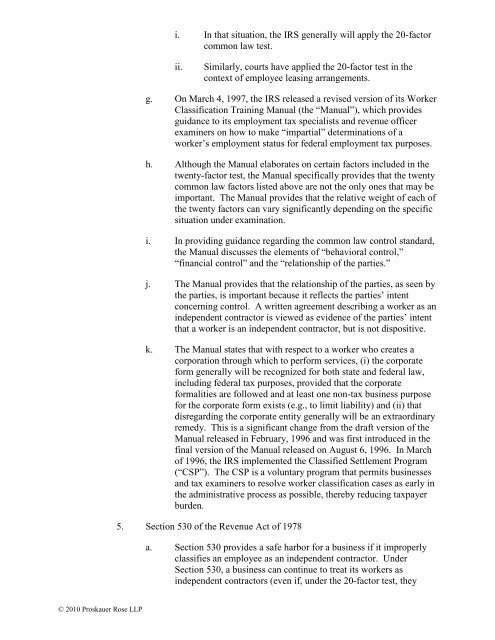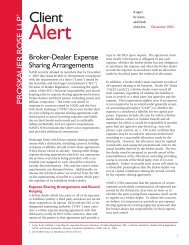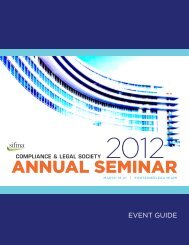Misclassification of Workers - Proskauer Rose LLP
Misclassification of Workers - Proskauer Rose LLP
Misclassification of Workers - Proskauer Rose LLP
Create successful ePaper yourself
Turn your PDF publications into a flip-book with our unique Google optimized e-Paper software.
© 2010 <strong>Proskauer</strong> <strong>Rose</strong> <strong>LLP</strong><br />
i. In that situation, the IRS generally will apply the 20-factor<br />
common law test.<br />
ii. Similarly, courts have applied the 20-factor test in the<br />
context <strong>of</strong> employee leasing arrangements.<br />
g. On March 4, 1997, the IRS released a revised version <strong>of</strong> its Worker<br />
Classification Training Manual (the “Manual”), which provides<br />
guidance to its employment tax specialists and revenue <strong>of</strong>ficer<br />
examiners on how to make “impartial” determinations <strong>of</strong> a<br />
worker’s employment status for federal employment tax purposes.<br />
h. Although the Manual elaborates on certain factors included in the<br />
twenty-factor test, the Manual specifically provides that the twenty<br />
common law factors listed above are not the only ones that may be<br />
important. The Manual provides that the relative weight <strong>of</strong> each <strong>of</strong><br />
the twenty factors can vary significantly depending on the specific<br />
situation under examination.<br />
i. In providing guidance regarding the common law control standard,<br />
the Manual discusses the elements <strong>of</strong> “behavioral control,”<br />
“financial control” and the “relationship <strong>of</strong> the parties.”<br />
j. The Manual provides that the relationship <strong>of</strong> the parties, as seen by<br />
the parties, is important because it reflects the parties’ intent<br />
concerning control. A written agreement describing a worker as an<br />
independent contractor is viewed as evidence <strong>of</strong> the parties’ intent<br />
that a worker is an independent contractor, but is not dispositive.<br />
k. The Manual states that with respect to a worker who creates a<br />
corporation through which to perform services, (i) the corporate<br />
form generally will be recognized for both state and federal law,<br />
including federal tax purposes, provided that the corporate<br />
formalities are followed and at least one non-tax business purpose<br />
for the corporate form exists (e.g., to limit liability) and (ii) that<br />
disregarding the corporate entity generally will be an extraordinary<br />
remedy. This is a significant change from the draft version <strong>of</strong> the<br />
Manual released in February, 1996 and was first introduced in the<br />
final version <strong>of</strong> the Manual released on August 6, 1996. In March<br />
<strong>of</strong> 1996, the IRS implemented the Classified Settlement Program<br />
(“CSP”). The CSP is a voluntary program that permits businesses<br />
and tax examiners to resolve worker classification cases as early in<br />
the administrative process as possible, thereby reducing taxpayer<br />
burden.<br />
5. Section 530 <strong>of</strong> the Revenue Act <strong>of</strong> 1978<br />
a. Section 530 provides a safe harbor for a business if it improperly<br />
classifies an employee as an independent contractor. Under<br />
Section 530, a business can continue to treat its workers as<br />
independent contractors (even if, under the 20-factor test, they




